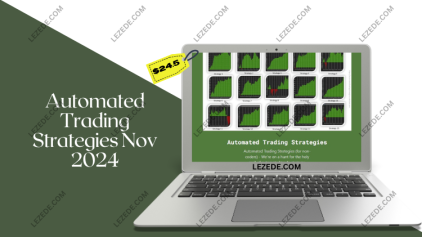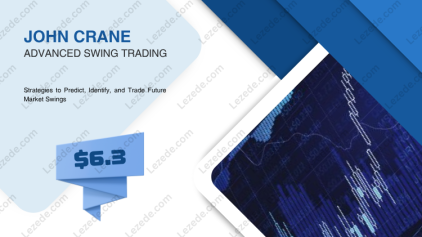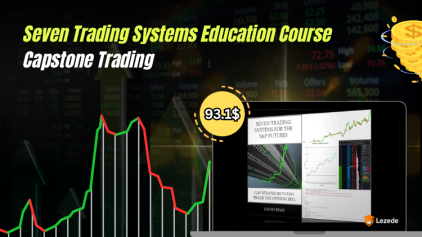Trading Stocks & Options on News by Master Trader – Includes Verified Content:
Master Trader’s Approach to Trading Stocks and Options on News
In today’s volatile markets, the skill to act swiftly in response to news events can make all the difference. Master traders view trading news-driven stocks and options as a psychological game, where perception outweighs reality. This method emphasizes how emotions—especially greed and fear—govern price action far more than the actual content of news stories. The sections below explore the pillars of this strategy, such as interpreting market sentiment, executing timely trades, and embracing continuous improvement. Mastering these elements can make your trading more intuitive, adaptable, and profitable.
Market Sentiment vs. News Itself
This approach starts with a foundational insight: trader sentiment is often more influential than the news itself. Seasoned traders stress the importance of decoding emotional market reactions over digesting facts. Instead of analyzing news at face value, the goal is to forecast how the market will emotionally respond.
Take an earnings report that beats expectations. Common sense may suggest a price surge, but outcomes often hinge on interpretation. If investors feel overly confident, greed can spark a rally. However, underlying fears like economic headwinds may prompt a selloff. Recognizing these emotional undercurrents can offer traders an edge in making accurate predictions.
Emotional Triggers in Market Reactions
A key component of news-based trading is identifying the emotional drivers behind market behavior. While fear can cause hesitation, greed may lead to impulsive trades. Understanding how these emotions manifest can enhance your market analysis.
Key emotional factors to evaluate include:
-
Sentiment Gauges: Identify general market mood—bullish, bearish, or neutral—regarding recent news.
-
Volatility Readings: Spikes in volatility often reflect emotional turmoil and signal potential opportunity or risk.
-
Historical Reactions: Past market behavior during similar events can provide valuable insight for future trades.
Tuning into these emotional patterns can help traders forecast movements and tailor their strategies accordingly.
Interpreting News Impact
Accurately reading the market’s response to news headlines can determine the success or failure of your trades. Not all news is equal, and its impact depends on timing, delivery, and context. Traders must look beyond the headline and assess how news fits within the broader market narrative.
Examples of News and Reactions
| Type of News | Common Market Response |
|---|---|
| Earnings Releases | Significant movement based on earnings vs. expectations |
| Economic Reports | Shifts in broad market mood—often short-term |
| Geopolitical Developments | Strong reactions, often driven by uncertainty or market shock |
For instance, when a company posts earnings, traders examine not just the results, but also future outlook and industry positioning. Mastering this analysis equips traders to forecast potential outcomes more accurately.
Trade Execution Tactics
Precision in timing is essential when trading around news. Expert traders often act ahead of key announcements, positioning themselves to benefit from expected volatility. This requires an in-depth understanding of how and when markets typically react.
Key Timing Techniques
-
Anticipatory Trades: Place trades before a news event based on predictive analysis.
-
Strategic Stop-Losses: Use protective orders to avoid large losses during sudden shifts.
-
Position Adjustments: Be agile in resizing your exposure as news unfolds.
Implementing these practices allows traders to make calculated decisions, maximizing their returns while managing risk.
Tools and Trading Strategies
Master traders rely on a toolkit designed for real-time decision-making and risk control. The right resources can significantly improve your reaction speed and trading accuracy during news events.
Must-Have Tools
-
Real-Time Analytics: Platforms offering sentiment analysis and news scanning help you stay informed.
-
Learning Resources: Study examples of successful trades to bridge theory with real-world application.
-
Risk Management Systems: Use automated tools to limit exposure during market turbulence.
Consistent success depends on regular practice and educational reinforcement. Combining tools with sound strategy leads to better trade outcomes over time.
Commitment to Learning
In a field that evolves daily, staying current is not optional—it’s essential. Master traders advocate a lifelong learning mindset, encouraging traders to refine techniques and adapt as conditions shift.
Strategies for Continued Education
-
Monitor Financial News: Stay updated with reliable news platforms to anticipate market changes.
-
Join Webinars: Learn from industry experts who share actionable insights and live examples.
-
Engage with Peers: Networking allows for the exchange of diverse strategies and shared learning.
By committing to learning and remaining flexible, traders are better prepared to succeed in unpredictable financial environments.
Conclusion
The master trader’s method for trading stocks and options on news is a blend of emotional intelligence, timely action, and continuous skill-building. Prioritizing how the market feels about news—rather than what the news actually says—can sharpen your edge. By focusing on sentiment, fine-tuning execution, and committing to growth, traders can thrive in a news-driven marketplace. Embrace the psychology behind the market, and let it guide you to smarter, more successful trades.











